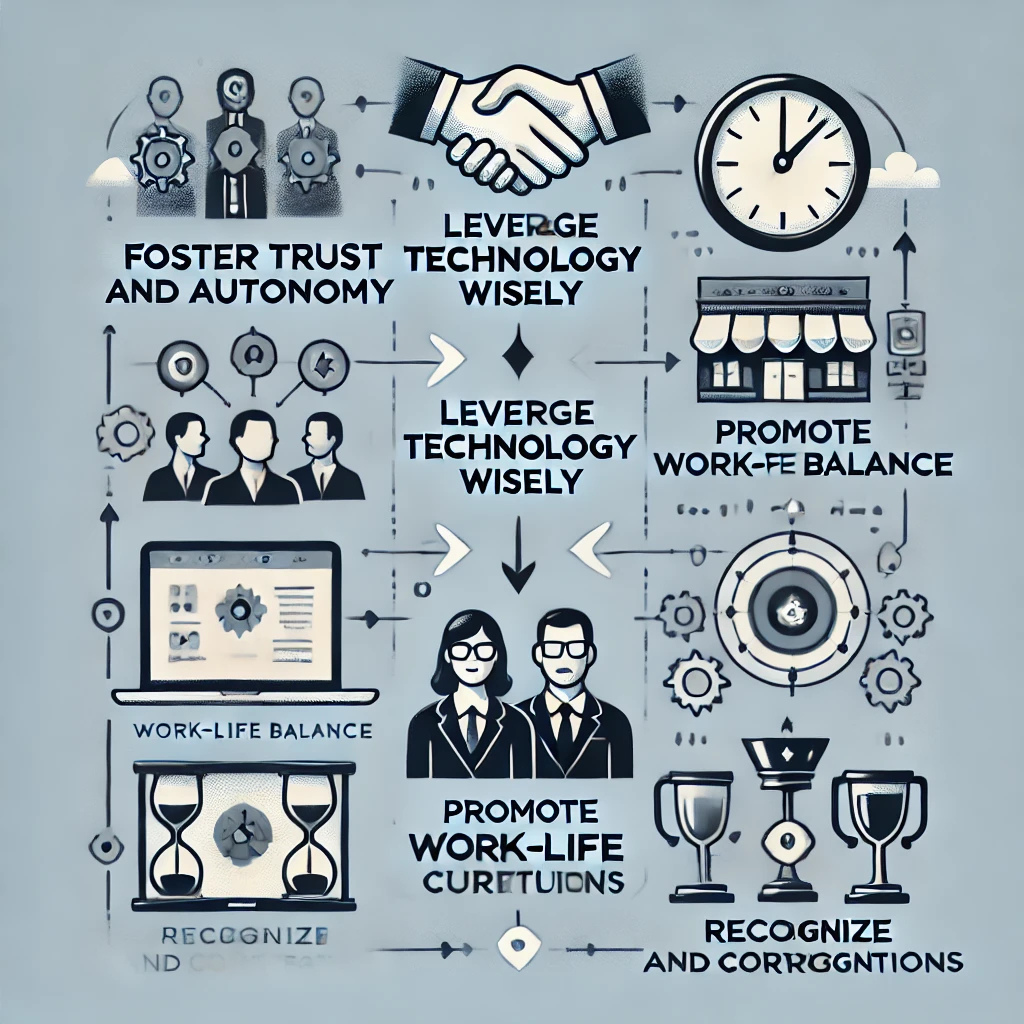Remote Leadership: Best Practices for Managing Distributed Teams
In today’s increasingly digital world, remote work has transformed how teams operate. As organizations embrace distributed teams, effective remote leadership has become critical for maintaining productivity, engagement, and collaboration. Remote leadership refers to the practices and strategies leaders use to manage teams that are geographically dispersed. This article explores best practices for managing remote teams, focusing on communication, trust-building, technology utilization, and employee engagement. By adopting these practices, leaders can foster a cohesive and high-performing remote workforce.
Effective remote leadership is essential for several reasons. First, it addresses the unique challenges that remote teams face, such as isolation, communication barriers, and lack of engagement. The top challenges remote workers face include collaboration and communication, loneliness, and distractions at home. Leaders who prioritize remote leadership can mitigate these challenges, ensuring their teams remain productive and motivated.
Furthermore, strong remote leadership can enhance employee satisfaction and retention. Studies show that when employees feel supported by their leaders, they are more likely to remain engaged and loyal to their organization. Remote leaders play a crucial role in creating an inclusive culture that values transparency, communication, and recognition, all of which contribute to employee well-being and performance.
Best Practices for Managing Distributed Teams
1. Establish Clear Communication Channels: Managers should define the status reports, relevant platforms such as Slack, Microsoft Teams, or Zoom etc. It is crucial to set up petty or daily meetings into make certain that everyone is on the same page in regard to goals and objectives. Fearlessly open and truthful discourse on all issues must be supported by the leaders and it should be possible for the members of the team to express their opinions. Also, the leaders must ensure that they adopt a right tone in their communication they must ensure that they involve everybody and be very open in whatever they are saying. This means not just going through the motions of reporting but also, listening to members of the team. Sources such as feedback loops together with the ability of the team members to give their opinions are good for a sense of inclusiveness. Expectations of communication frequency and response time need to set and defining these keeps everyone informed (Valo & Mikkola, 2020).
2. Foster Trust and Autonomy: Leaders should empower their team members by providing them with autonomy in their roles. This includes allowing employees to make decisions and manage their own schedules. Trust-building can be further enhanced through transparency, where leaders openly share information about organizational goals and changes. Leaders can foster trust by being consistent in their actions and decisions. Demonstrating reliability in meeting commitments and following through on promises reinforces confidence among team members. Additionally, sharing successes and challenges within the team can build camaraderie and collective accountability, further strengthening trust (Badrinarayanan, 2024).
3. Leverage Technology Wisely: Leaders should utilize collaborative tools and project management software like Trello, Asana, or Monday.com to facilitate task management and ensure accountability. Moreover, video conferencing tools help maintain personal connections, reducing feelings of isolation among team members. Training team members on the effective use of technology is equally important. Ensuring everyone is comfortable with the tools available can minimize frustration and enhance productivity. Regularly assessing the effectiveness of the chosen tools and being open to feedback allows leaders to adapt and refine their technology strategy, ensuring it meets the evolving needs of the team (Hamada, 2023)
4. Promote Work-Life Balance: Leaders should model this behavior by respecting boundaries, such as not sending emails after hours. Providing flexible work hours allows team members to manage their personal and professional responsibilities effectively, ultimately leading to higher job satisfaction. Leaders can also promote work-life balance by encouraging breaks and time off. Regular reminders for team members to take vacations and disconnect from work can prevent burnout and enhance overall well-being. Implementing wellness programs or activities that focus on mental and physical health can further support employees in maintaining balance (Dziuba, Ingaldi, & Zhuravskaya, 2020).

5. Recognize and Reward Contributions: Acknowledging employees’ hard work is vital for maintaining motivation and morale in remote settings. Leaders should implement recognition programs that highlight individual and team achievements. Celebrating successes, whether big or small, fosters a positive work environment and encourages continued performance. Creating a culture of recognition involves not only formal programs but also informal acknowledgments. Simple gestures like sending a congratulatory message or sharing achievements in team meetings can go a long way. Furthermore, involving team members in the recognition process, such as peer nominations for awards, can enhance engagement and inclusivity (Konovalova, 2021)
References
- Badrinarayanan, V. (2024). Trust building strategies for virtual leaders in the post pandemic era. Project Leadership and Society, 5, 100126. doi.org/10.1016/j.plas.2024.100126. [Trust-building].
- Dziuba, S., Ingaldi, M., & Zhuravskaya, M. (2020). Employees’ job satisfaction and their work performance as elements influencing work safety. System Safety: Human - Technical Facility - Environment, 2, 18-25. doi.org/10.2478/czoto-2020-0003. [job satisfaction].
- Hamada, M. (2023). Investigate the efficiency of project management software in construction projects. The Eurasia Proceedings of Science Technology Engineering and Mathematics, 22, 247-257. doi.org/10.55549/epstem.1350951. [project management software].
- Konovalova, V. (2021). Employee recognition programs: Experience and new reality. Management of the Personnel and Intellectual Resources in Russia, 10, 25-30. doi.org/10.12737/2305-7807-2021-10-3-25-30. [recognition programs].
- Valo, M., & Mikkola, L. (2020). Focusing on workplace communication. doi.org/10.4324/9780429196881-1. [communication].